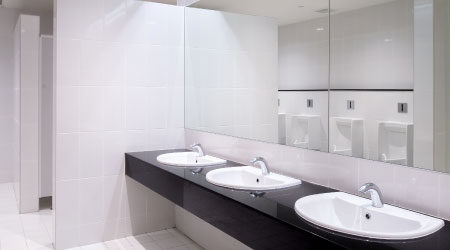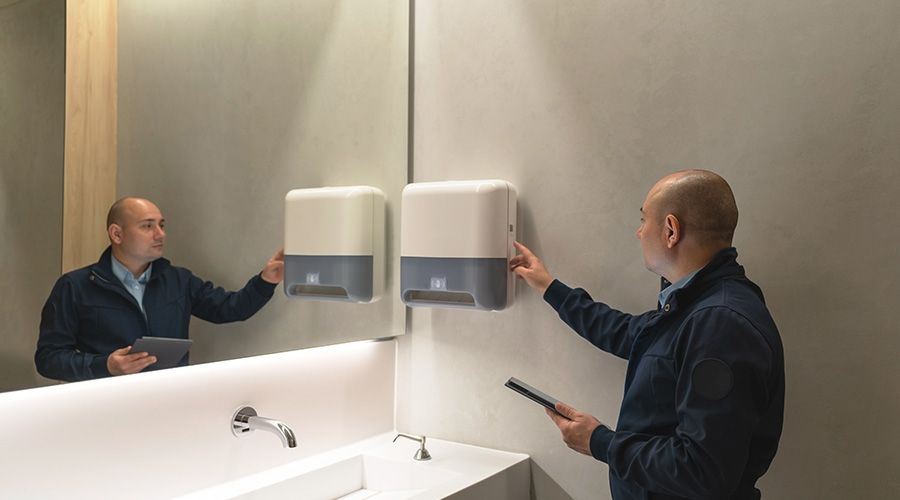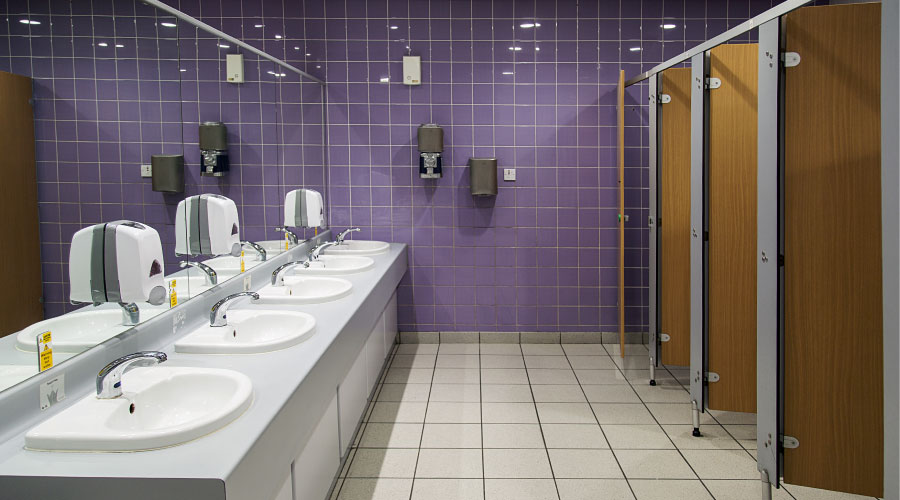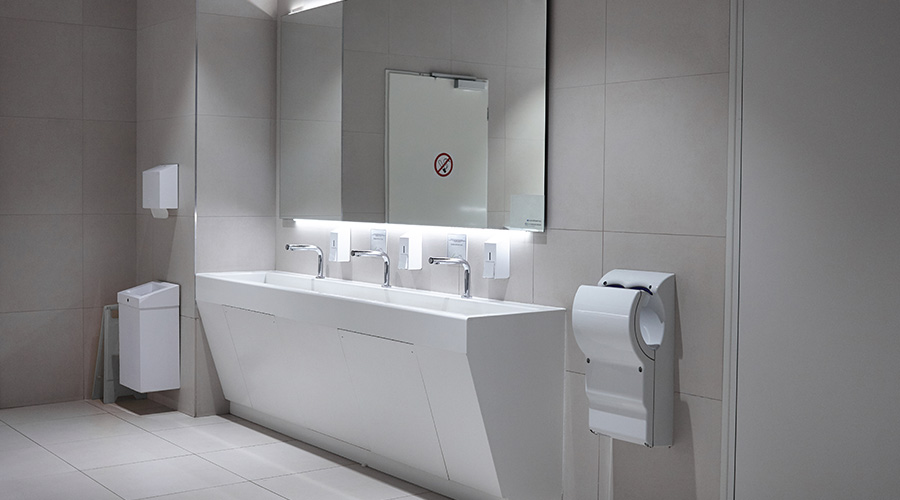Finding Right Restroom Materials Is Key
Preferences in the materials used in restrooms continue to evolve. Durability and non-porous surfaces such as popular stainless steel are key considerations. "At this point, the standard practice is materials that are very durable," such as stainless steel, says Sven Shockey, an architect with Smith Group JJR who specializes in office space. For toilet partitions, "stainless steel is great, even though most spaces we design don't have much of a problem with vandalism." If vandalism is a concern, painted steel is the surface to avoid, he says.
"The big effort for office space is to be compelling, inviting, and sustainable," says Shockey. "Companies want to be able to recruit and retain. And that extends even into restrooms."
Stainless steel is also a popular choice at the Smithsonian. Due to the constant renovation cycle, Bechtol says, the Smithsonian never has two restrooms exactly alike. At the Museum of Natural History, with 87 bathrooms, at least one is always being renovated.
When the Smithsonian hires architects for a new facility or renovation, in designing restrooms "their only choice is color," Bechtol says. "I hate to say it, but we know so much more, because we live here." She gives an example of a designer who wanted glass thresholds for the doors. "We told him it was going to break, but he talked us into it, and they broke about every six months until we renovated it."
The bottom line: "We've learned not to let architects talk us into finishes we haven't tried," Bechtol says. "When we get something that doesn't hold up, we build (the knowledge) into the next specs. When we find fixtures that work, we try to use them again and again."
Any porous material in a restroom can create trouble. Bechtol says some restrooms at the National Zoo have painted cinderblock behind the urinals, and "you cannot get the smell out, no matter how much you clean." Cementitious grout is another material that has fallen out of favor; as well as being porous, it is hard to maintain. "I like to use epoxy grout wherever possible," Shockey says. "It's completely non-porous."
"We like to literally hose down the restrooms once in a while," Bechtol says, so floors must slope toward the drain. "You can do that beautifully, too. Terrazzo functions like it's concrete." Terrazzo finish is expensive, but looks beautiful and has no seam lines. More utilitarian restrooms at the National Zoo do use polished concrete, she says.
Countertops, too, should avoid seam lines, Morgan says; it's one less place where water can collect.
Related Topics:














